From Boring to Breathtaking: Discover the Top Flowers to Pair with Carnations!

This post follows our research editorial guidelines.

Carnations have quickly become one of my favorite flowers to grow over the years. Not only do they grow well in my cooler northern climate they happen to handle growing in shady patches quite well. When in full bloom, even just a few Carnations will fill the air with a sweet aroma that’s only matched by lilacs in my mind.
If you’ve begun adding pockets of carnations throughout your garden you may be wondering which flowers will grow alongside as companions to these sweet little blooms. I’ve put together my list of showstopping flowers that will grow wonderfully alongside these cherished garden additions. Some have been added for their pop of contrast while others will complement their height and texture throughout the growing season. Regardless of your goals, each display will deliver a dynamic tapestry of color and form!

Quickly Find The Carnation Companion you’re looking for:
Lavender
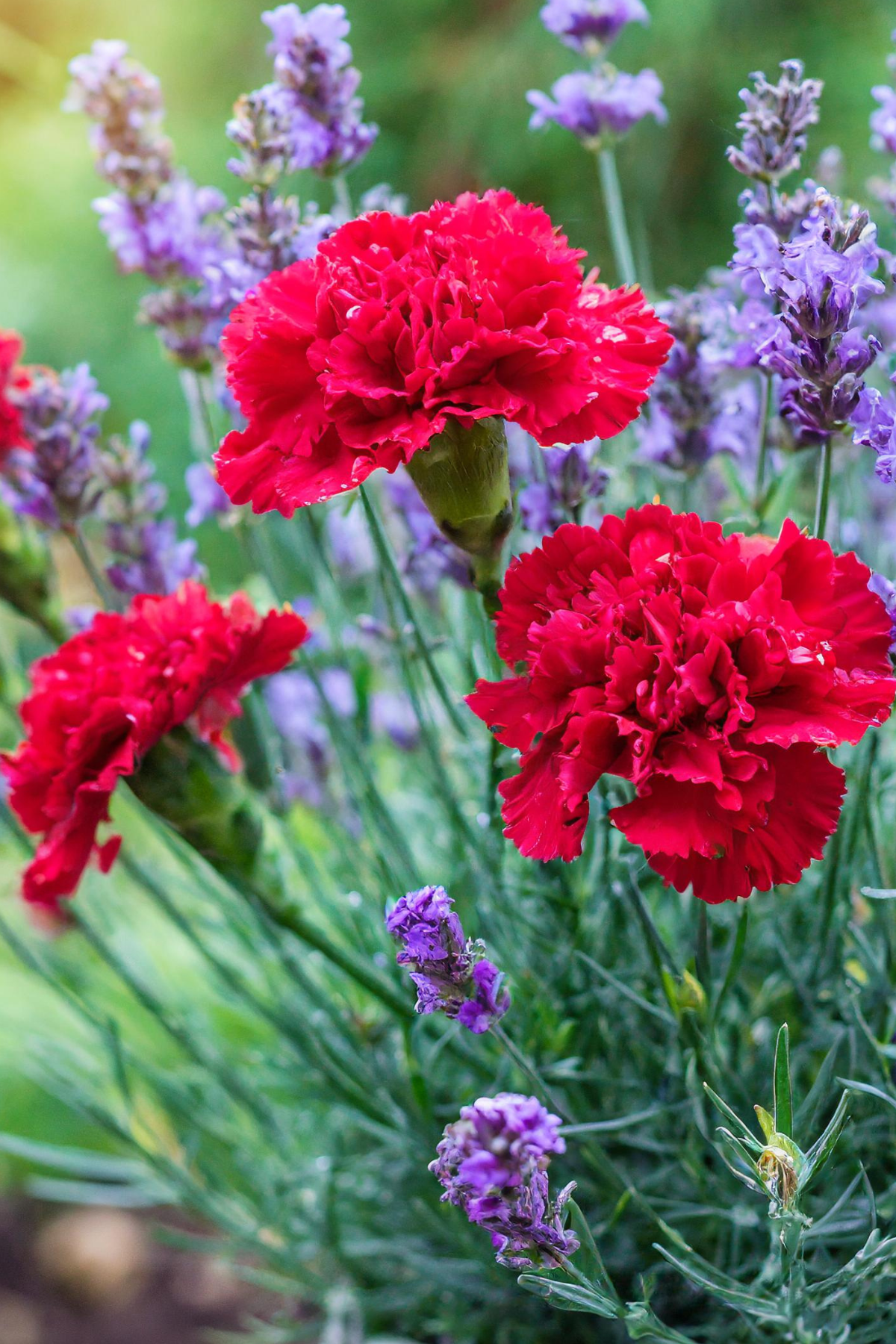
In my garden, lavender and carnations stand side by side, a testament to their shared love for the sun’s full embrace and well-drained soil. Lavender, with its aromatic silver foliage and stunning purple blooms, is the perfect complement to my carnations’ bright and varied colors. The cool hues of lavender beautifully offset the warmth of the carnations, creating a visually appealing contrast that I adore.
Lavender’s knack for attracting bees and butterflies not only boosts the health of my garden but also enhances the pollination of nearby carnations, ensuring they bloom as fully as possible. Its strong scent also acts as a natural deterrent to pests like ants which LOVE the sweet smell or carnations.
Snapdragons (Antirrhinum)
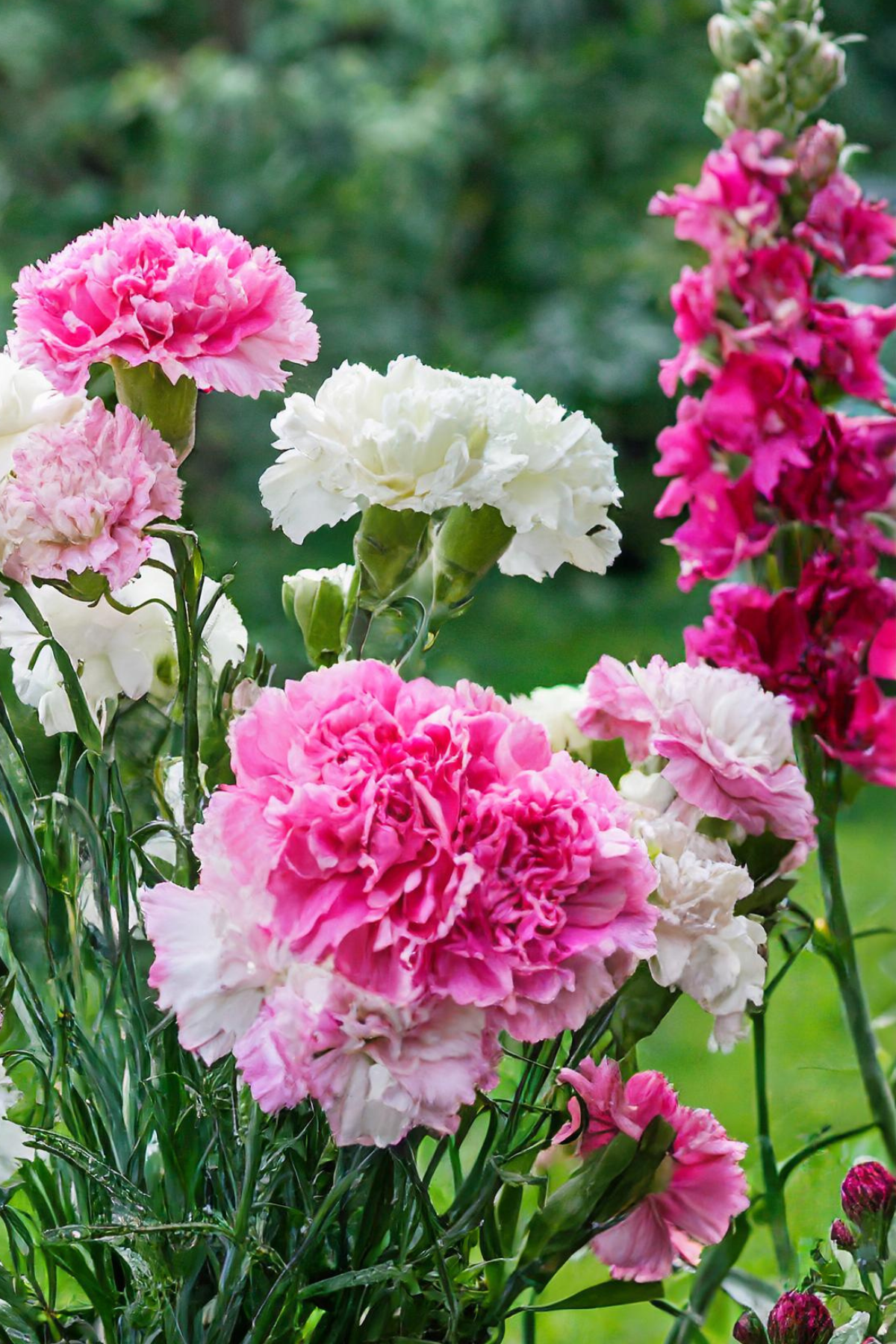
Snapdragons introduce an exciting range of heights and colors to my garden, establishing themselves as the perfect companions for my carnations. Their ability to add vertical interest helps create depth inviting the eye to explore the varied textures and forms. The vibrant hues of snapdragons, ranging from soft pastels to rich, intense colors, complement carnations perfectly, ensuring my garden remains a sight for sore eyes throughout the growing season.
Sharing a preference for cooler temperatures and well-drained soil, snapdragons and carnations thrive side by side in my garden without competing for resources. The staggered blooming times of snapdragons extend the colorful display, keeping the landscape vibrant as the carnations begin to fade, ensuring a succession of blooms that delights the eye.
Salvia
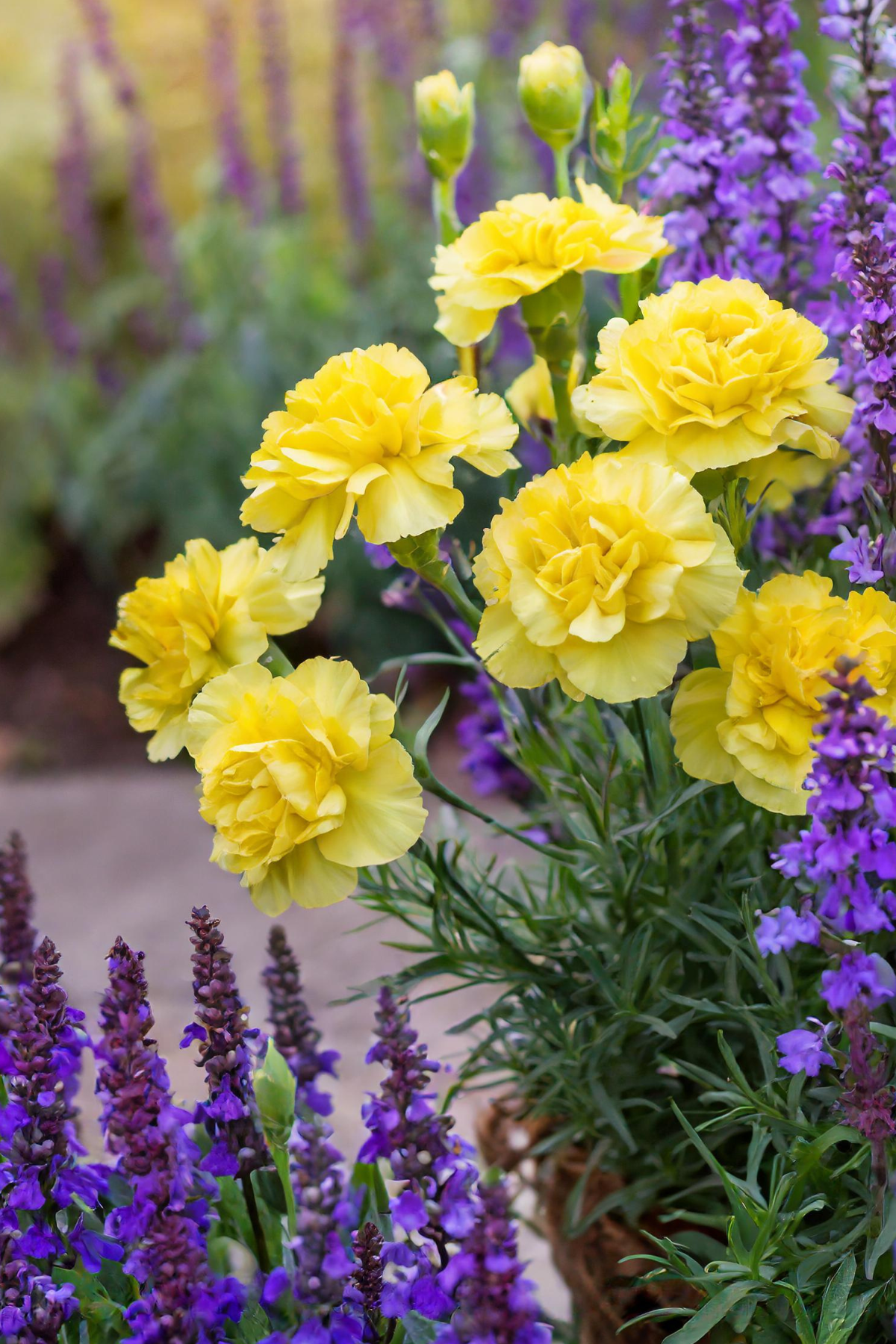
Salvia adds a dramatic contrast with its spiky flowers and tall, slender stems, beautifully juxtaposing the softer, ruffled appearance of carnations. This mix of textures and forms adds depth and intrigue to the garden. The color range of salvia, from deep blues to vivid reds, which complements the color pallet of carnations exceptionally well. A growing benefit of planting Salvia next to carnations is that they both share a love for full sun to partial shade and well-drained soil.
Sedum (Stonecrop)
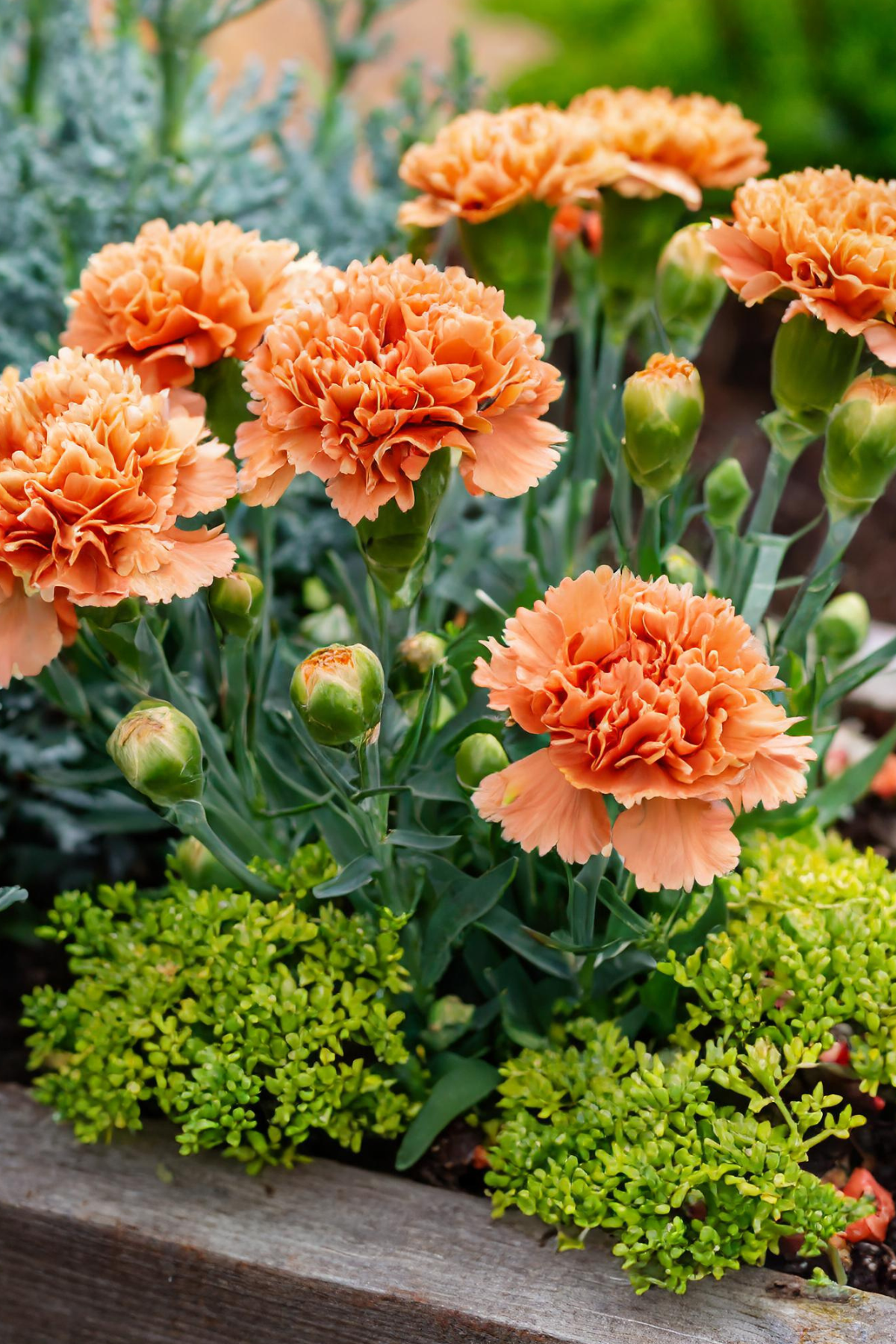
There are many forms of stonecrop to consider. I use low-growing sedum varieties as a ground cover that contrasts with the taller stems of my carnations. Their succulent leaves and star-shaped flowers introduce a unique texture and form, diversifying the garden’s visual interest. Sedum blooms in late summer to fall, offering a fresh burst of color and interest that lasts well throughout the growing season.
Sharing a notable drought tolerance, sedum and carnations prefer well-drained soil and minimal water once established. This makes sedum a wonderfully low-maintenance companion in my garden, easing the task of garden management.
Marigolds
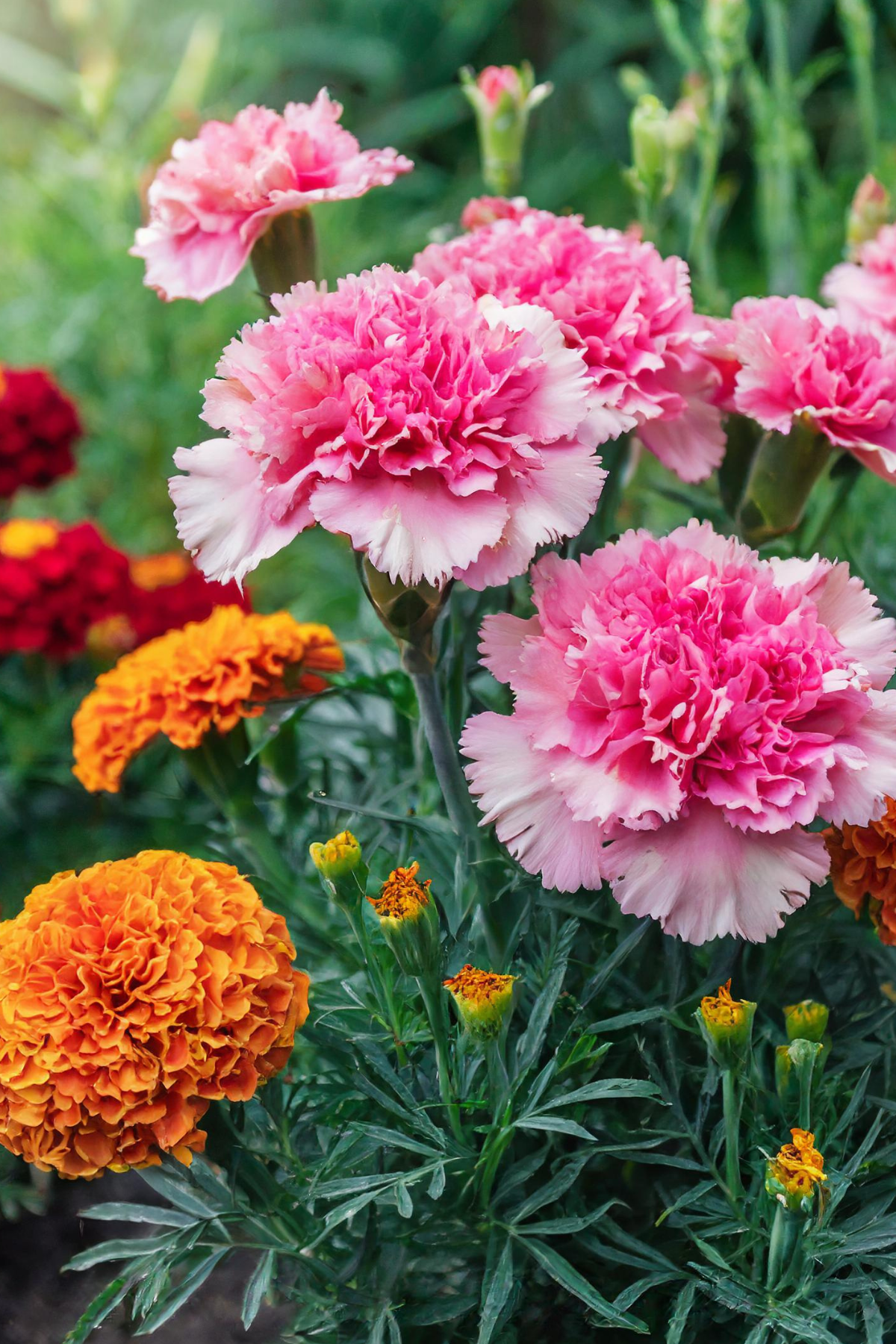
Marigolds are a common companion plant with many other flowers and vegetables in my garden. I often lean to the varieties that are deep red and transition to orange with a hint of yellow. The larger size of the marigold flowers complement the sometimes smaller blooms of carnations.
Thriving under similar conditions as my carnations, marigolds integrate seamlessly into my garden. Their strong scent naturally repels many pests lurking in the corners, providing a protective shield for my more vulnerable carnations.
Baby’s Breath (Gypsophila)

Taking you down a different path, Gypsophila will introduce a softening effect and airy quality to your garden, creating a dreamy contrast to the boldness of my carnations. This lightness and openness bring an ethereal quality that I love, making the garden feel a bit more spacious.
Baby’s breath share a love for well draining soil making them an effortless carnation companion that enhances both height and texture of my garden. Its extended blooming period keeps things interesting well into the late summer months.
Cosmos
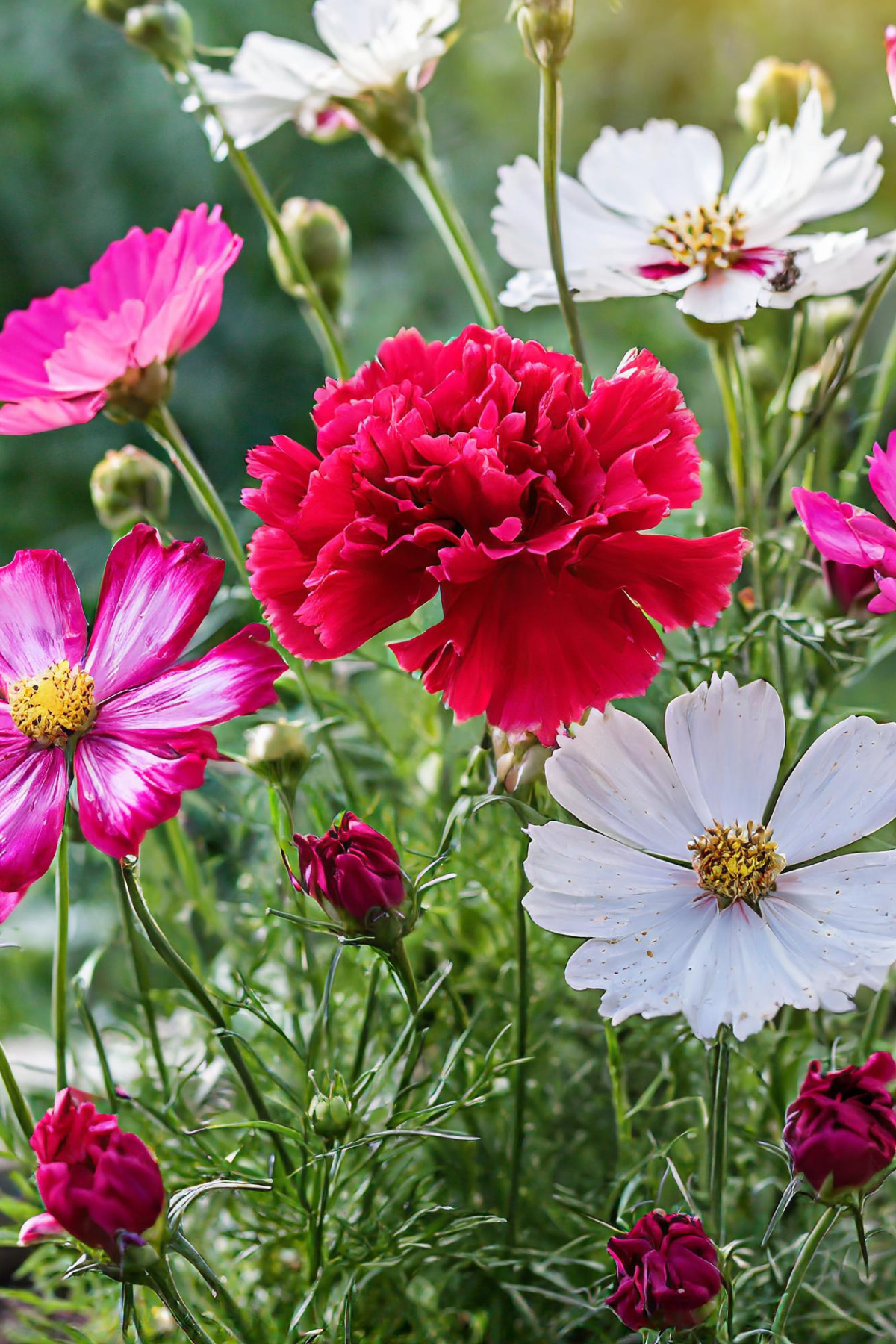
For a true play on contrasting heights, try adding Cosmos flowers alongside your carnations. It’s feathery foliage and daisy-like flowers will serve as a fantastic backdrop for your pockets of carnations. Not only will the height each plant complements well, their bloom times will ensure pops of color remain. As the carnations begin to fade, the cosmos flowers will remain well into the end of the growing season.
Cosmos and carnations also enjoy similar growing conditions, both flowers are easy to care for and offer a hassle-free companion that keeps my garden looking its best.
Roses
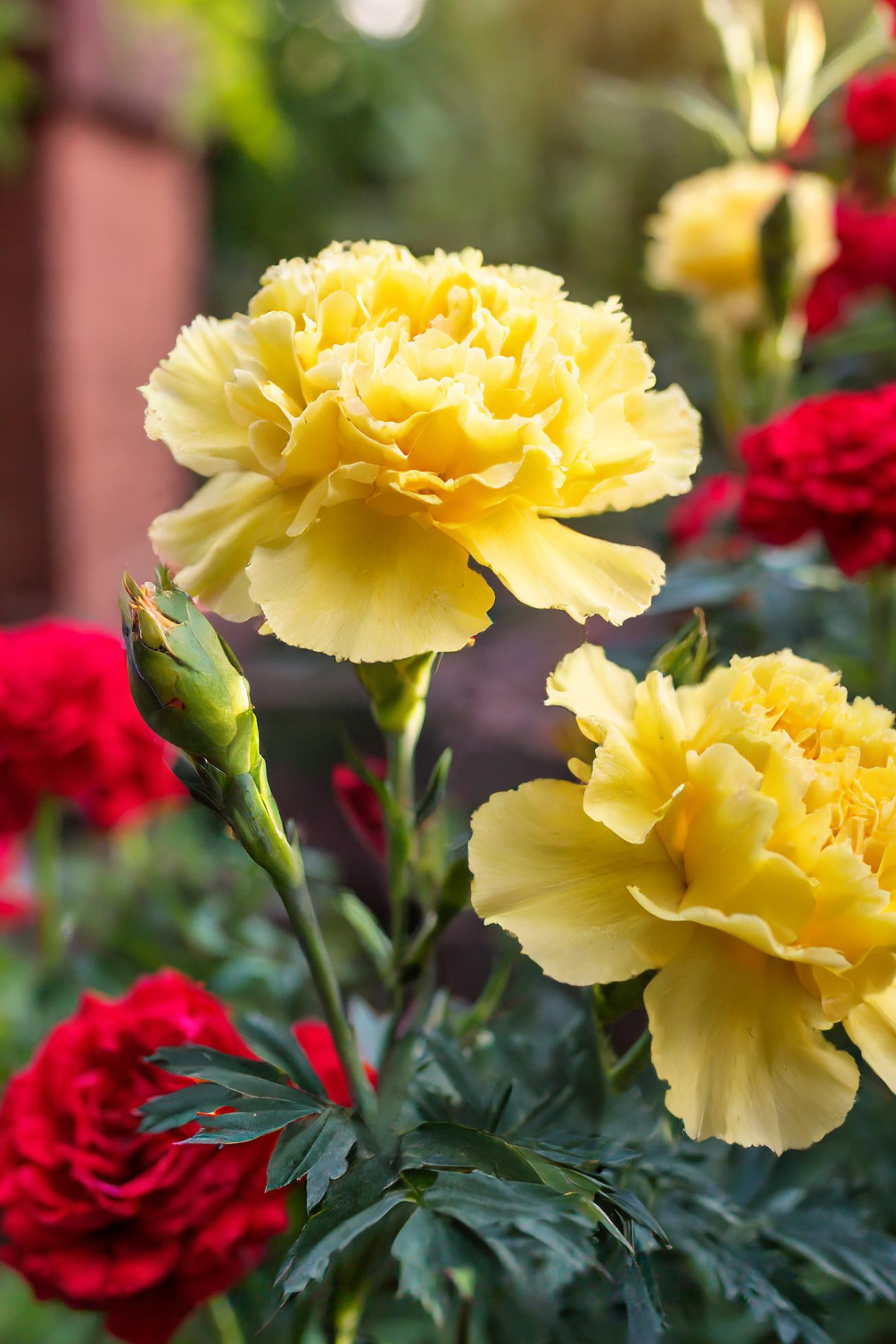
Roses and carnations are about as classical as it gets. Combine the two and you truly have an arrangement that will stand the test of time. Together they create a sight to be seen evoking a sense of romanticism and timelessness. They share similar growing conditions, both requiring full sun, well-drained soil, and regular feeding. They grow well alongside each other harmoniously without competition, allowing each to flourish a they should.
The combination of roses and carnations not only offers a visual feast but also an enchanting aroma. This blend of sweet fragrances creates an immersive sensory experience allowing me to truly reap the rewards that I sow.
Final thoughts:
I hope you found something new here for your garden to experiment with. I had fun sharing these creations with you. If you learned something new or had a question let me know in the comments below! I’d love to hear from you. 😊

Before you go!
11 Perennial Flowers That Bloom All Summer Long
15 Purple Perennial Flowers with Pictures + Growing Guides
10 Bright Yellow Perennial Flowers to Add to Your Garden
11 Weeds With Purple Flowers | Common Lawn Weeds & Hidden Gems in Your Yard